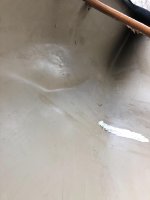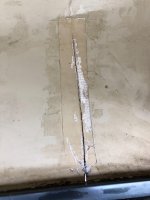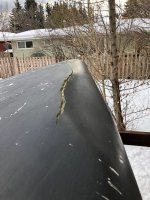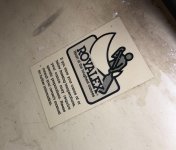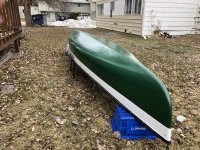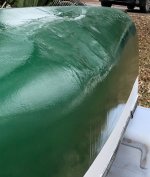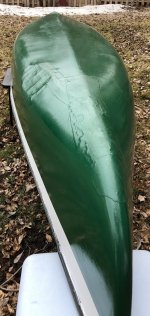What Recped and Doug said about dents, cracks, seats and paint.
For a heat source to help push out the dent a halogen floodlight has worked very well. Like one of these
https://www.walmart.com/ip/HT-500-WA...4a&athena=true
Position that lamp 12 – 18 inches away from the dent and check to make sure the vinyl skin isn’t getting too hot, move the lamp back or forth so that the hull is no hotter than you can stand to touch briefly with your hand. The lamp will easily heat a largish area, slowly, through and through, and you don’t need to stand there for waving a hair dryer or heat gun around. BTW, you can easily melt the vinyl if you rush with a heat gun.
Have a board (piece of 2x4) pre-cut that you can use to force out the dent, maybe propped off the bottom of the seat. You’ll want a thick piece of stiff foam or something hull curve shaped to pad the end of the prop board, so you don’t force out a 2x4 shaped rectangle. Test fit all of that before heating the dent so you know how it fits in place once the dent has been heated to softer flexibility.
Leave the prop board in place until the hull has cooled. Or longer; I have never worked on a dent in that close proximity to a crack and would leave the prop board in place until the crack on the exterior has been filled and patched. It appears that the crack might squeeze more closed with the dent pushed back into position.
The photo of the dent on the inside looks like it matches the dent on the outside but, if after pushing the dent back into place the inner vinyl skin appears to be delaminating you can slice an opening, push some G/flex under the vinyl and weigh the skin down; put a piece of wax paper over the slit delamination and pile some large Zip-lock bags full of sand atop the wax paper.
If you do decide to paint the hull use a paint color as close as possible to the hull color, so that the inevitable scratches through the paint won’t show as contrasting fugly. Brush on oil based enamel paint works well enough.
EDIT: Do not use acetone to clean the areas where the foam core is exposed. Acetone will dissolve the foam, and keep dissolving it until you have a soft gooey mess.


